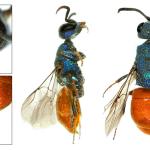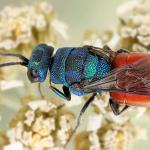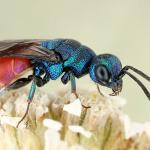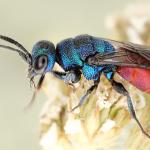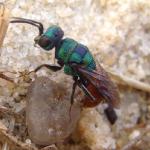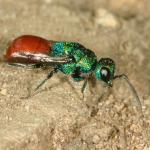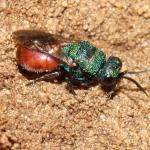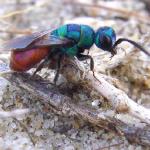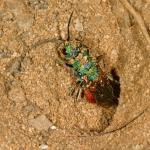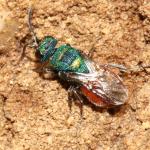Identification keys and general biology are give in Morgan (1984), Kunz (1994) and Mingo (1994).
Cornwall to Kent and north to East Norfolk. There is one old record from North Wales. Found in the Channel Islands but not in Ireland.
Overseas, occurs in many parts of Europe (Norway, Sweden, Finland, Denmark, The Netherlands, Belgium, France, Spain, Germany, Switzerland, Italy, former Czechoslovakia, former Yugoslavia, Greece, Cyprus), North Africa and Asia (Uzbekistan, Siberia and Manchuria).
Not listed in either Shirt (1987) or Falk (1991); however, work for this Atlas suggests that its status should be reviewed.
Hedychridium roseum can be diagnosed by the dull, as opposed to shining, abdomen - unique to this species amongst British Hedychridium.
Found in open sandy areas associated with the nesting habitat of its host (see below). Present on inland sandy areas including lowland heaths, and coastal sandy areas.
Probably univoltine; July and August.
Wild carrot (Daucus carota), sheep's-bit (Jasione montana) and yarrow (Achillea millefolium).
No information available.
1998


